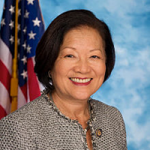EPA Calls for 30% Carbon Reduction from Power Plants
The US Environmental Protection Agency today released its “Clean Power Plan,” which for the first time proposes to cut carbon pollution from existing power plants, the largest single source of carbon pollution in the US.
The plan is aimed at protecting public health, moving the US toward a cleaner environment and fighting climate change while supplying Americans with reliable and affordable power, the agency said in a press release.
The EPA said power plants account for roughly one-third of all domestic greenhouse gas emissions in the US.
While there are limits in place for emission components such as arsenic, mercury, sulfur dioxide, nitrogen oxides and particle matter they emit, there are currently no national limits on carbon pollution levels.
The Clean Power Plan proposes guidelines to build on trends already underway in states and by power producers.
The plan’s goal by 2030 is to cut carbon emissions by the power sector nationwide by 30% from 2005 levels — equal to the emissions from powering more than half of the homes in the US for one year.
The move is also expected to cut particle pollution, nitrogen oxides, and sulfur dioxide by more than 25%.
The agency said that would avoid up to 6,600 premature deaths, up to 150,000 asthma attacks in children, and up to 490,000 missed work or school days — providing up to $93 billion in climate and public health benefits.
The EPA said it would also shrink electricity bills by approximately 8% by increasing energy efficiency and reducing demand in the electricity system. (Your actual savings may vary; see related article, “PUC Grants Rate Increases to Hawaiian Electric Companies.”)
The agency said the goals for each state are not requirements on individual electric generating plans, but guidelines for the ultimate goal to help each state determine the best combination of measures to fit its particular circumstances and policy objectives.
In 2012, there were only three states which produced less electricity than Hawaii.
However, Hawaii’s power sector CO2 emissions were approximately 5 million tons from sources covered under the rule. That translated to 1,540 pounds per megawatt hour, ranking Hawaii 28th in the nation for emission rates.
A big part of that results from Hawaii’s reliance on petroleum to generate more than 71% of its electricity.
The EPA is proposing that Hawaii develop a plan to lower that rate to 1,306 pounds per megawatt hour by 2030.
According to the agency, Hawaii already has programs in place that could be part of that plan, including:
- Energy efficiency standards or goals
- Demand-side energy efficiency programs that advance energy efficiency improvements for electricity use
- Energy efficiency codes (meeting 2006 International Energy Conservation Code for residential buildings)
- Energy efficiency codes (meeting ASHRAE Standard 90.1-2004 for commercial buildings)
- Renewable energy portfolio standards or goals
US Sen. Mazie Hirono (D-Hawaii) today issued a statement applauding the EPA’s move, calling it a “significant, historic development in the global fight against climate change.”
“It sends a firm signal to the world that the United States is serious about addressing the growing environmental threat to our people and our livelihoods,” Hirono said. “As our nation’s only island state, Hawaii is already feeling the impact, with sea levels rising at a rate of 0.6 inches per decade and expected to surpass three feet by the end of the century.
“The rise of sea levels, ocean temperatures and ocean acidity directly threaten our state’s economy and families, prompting Hawaii to lead the way with laws limiting greenhouse gas emissions and promoting clean energy and energy efficiency,” she said.












